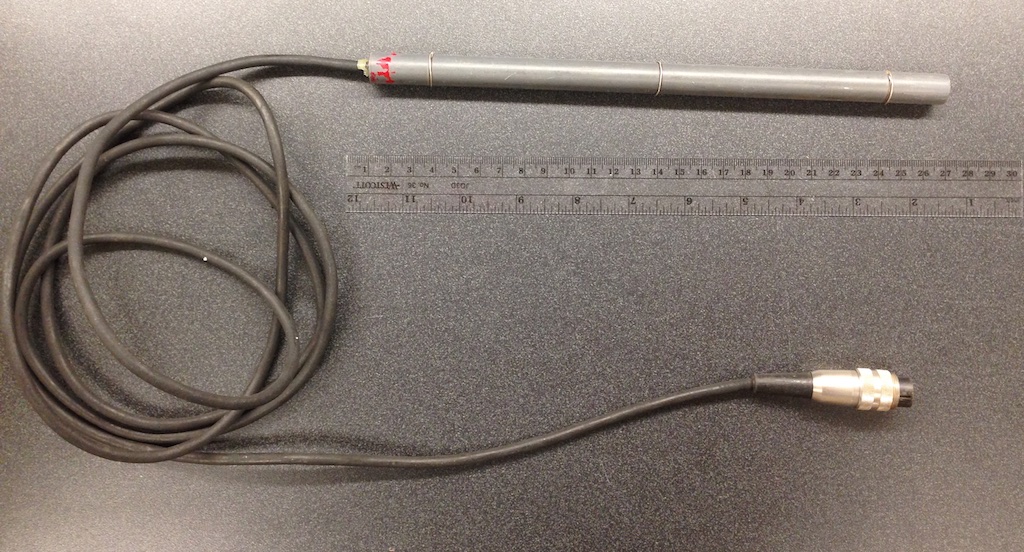In my previous article about how to put together a mormyrid "fish finder" from two inexpensive Radio Shack hobbyist amplifiers, I described using cheap speaker wire for the electrodes. I have just added to this site instructions for building the much nicer electrodes we have used in the Hopkins lab for many years, written by Garry Harned who designed and built them. There are two documents, on written in 2000, the other in 2007. Both describe the same electrode shown below in this photo in which three silver wire electrodes (positive at the far end, negative on the cord end and center reference electrode) are mounted on a PVC wand, attached to an insulated, sturdy cable with a 3-prong DIN plug at the end. (If I were to build new ones I would substitue the much more standard 3-prong XLR microphone plug.)
I have also added schematics to three fish finder amplifiers. Two are models designed by the late Walter Heiligenberg of Scripps and the third is one, based on the other two that I built in 1993. Perhaps they'll be helpful to somebody, but as I wrote in the earlier article, a couple of Radio Shack amplifiers hooked into each other can't be beat for cost and simplicity, at least for fish with higher-frequency discharges. Carl Hopkins points out that you wouldn't be able to hear the 50 Hz hum of a Sternopygus gymnotiform with those, since the low-end frequency response rolls off at 100 Hz.
~ J

